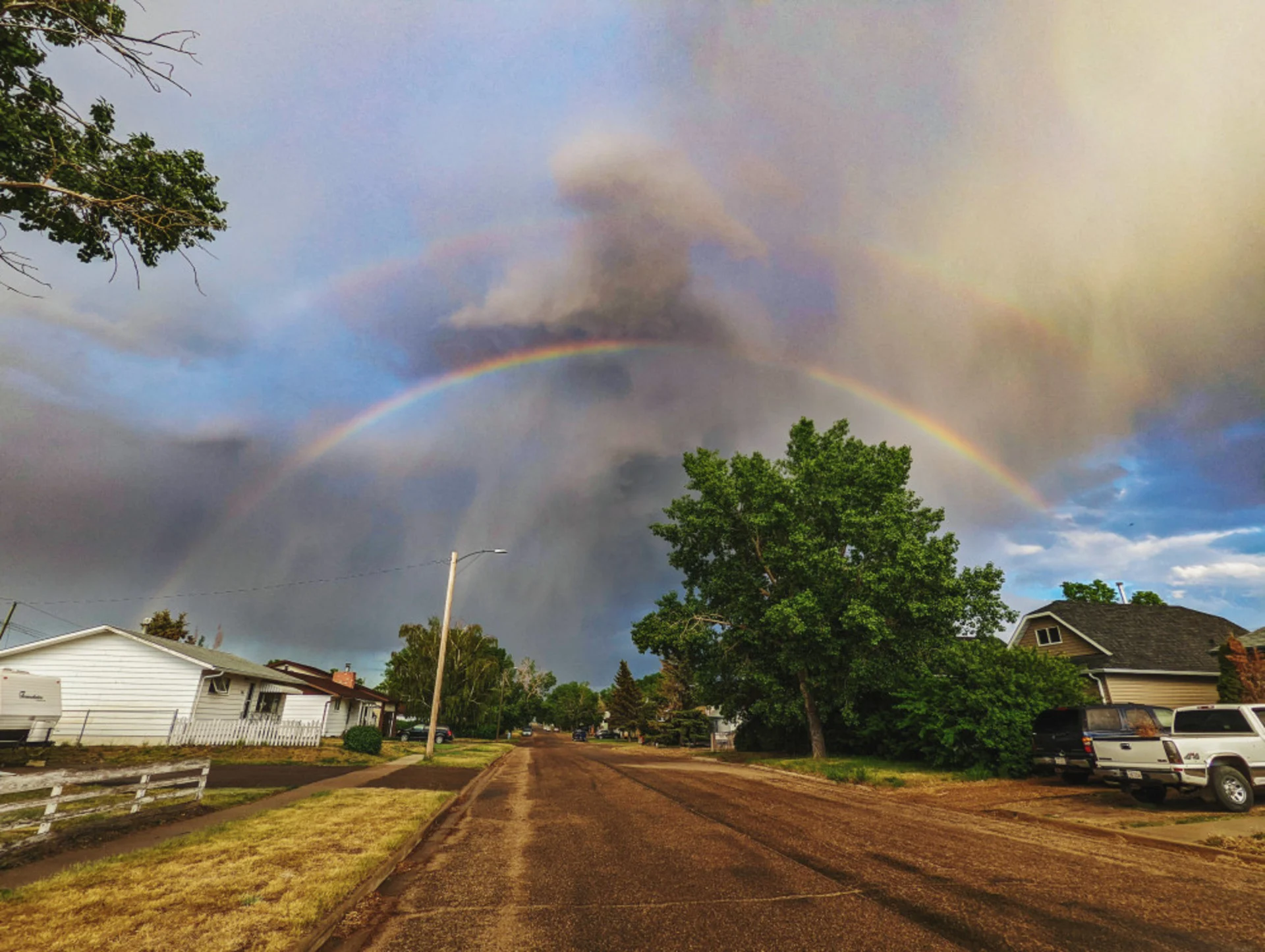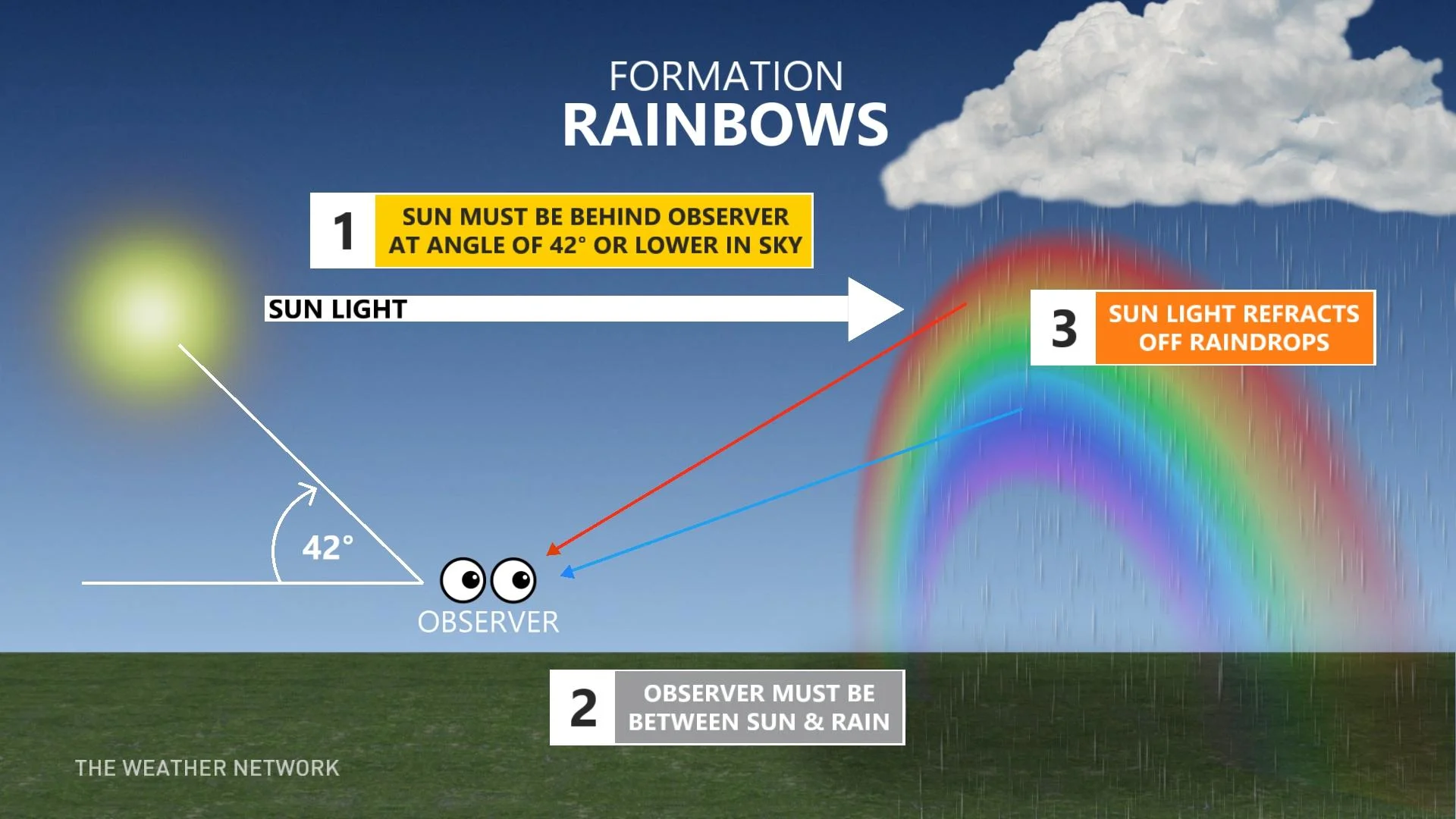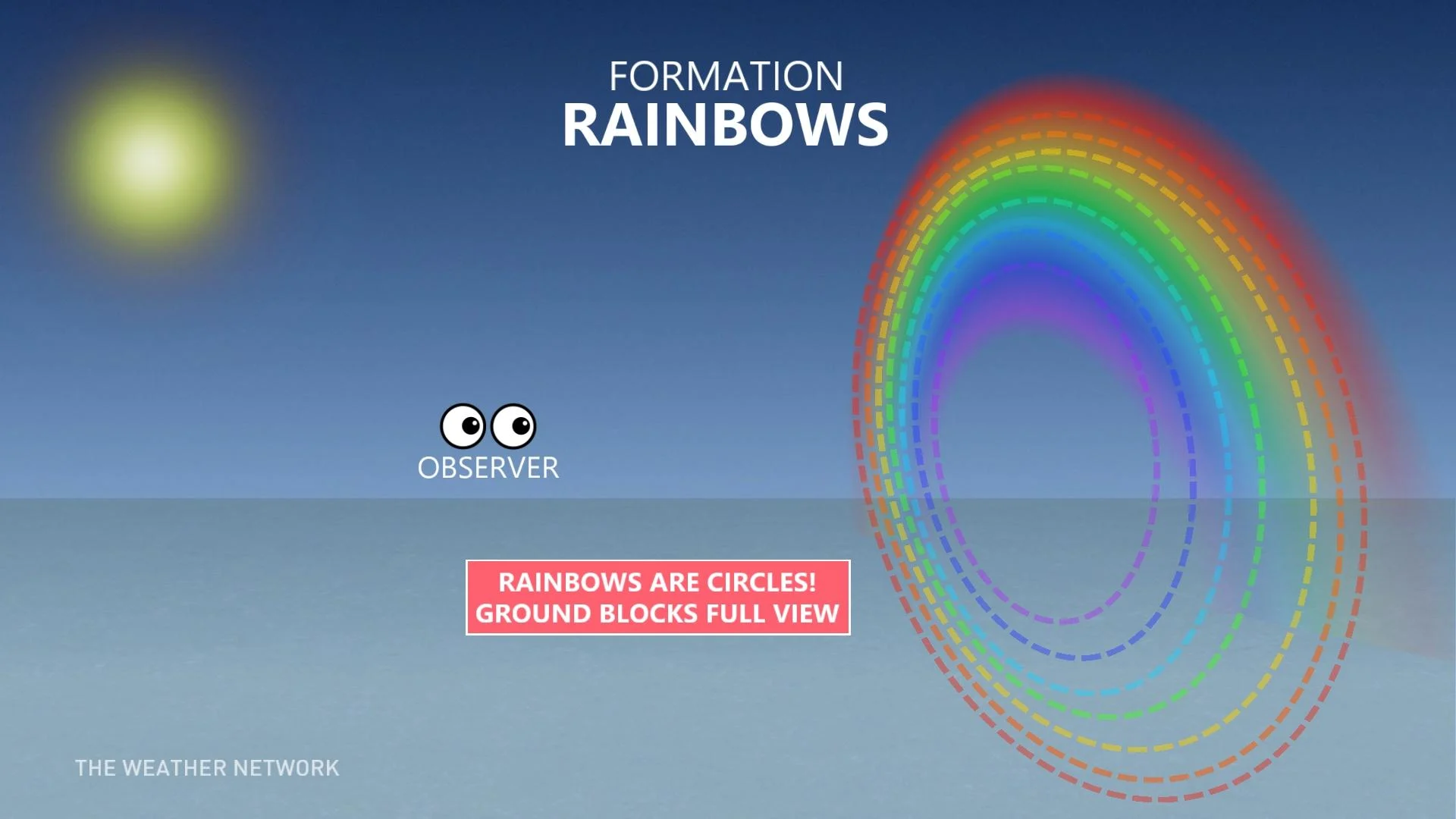
Why searching for the end of a rainbow is harder than you think
Have you ever laid awake at night thinking about the age-old mystery, “What is at the end of a rainbow?” Well, fear no more, for The Weather Network meteorologist Rachel Modestino has the answers.
Rainbows are a phenomenon that have enraptured the world with their vibrant colours and beauty.
These colourful arcs are made from water droplets in the air refracting the Sun’s light into the different wavelengths that it comprises. Our eyes view these wavelengths as colour, and each colour has its own wavelength.
ALSO READ: What are your odds of finding a four-leaf clover?

Rainbows can be seen anywhere in the world. Locations that receive lots of rain annually, such as Ireland, which receives up to 3000 mm of rain annually, do tend to see more rainbows than places that receive less annual rain.
So, what is hidden at the end of a rainbow? Many say leprechauns hide their pots of gold there. But why has nobody found any of these pots of gold yet?

The truth is that there is actually no “end of the rainbow.” While we see rainbows as giant arcs over the Earth’s surface, we’re only really seeing half of the rainbow.
“Since the raindrop is circular, the reflection it creates is also circular,” The Weather Network meteorologist Rachel Modestino explains. “We don’t see a full circular rainbow, however, because the Earth gets in the way.”
Watch the above video as Rachel Modestino explains in more detail how leprechauns use science to keep their gold hidden away from us.
Header image courtesy of Tracy Hudson, submitted to The Weather Network






